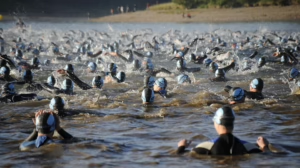The Comprehensive Guide to Training and Fitness
Introduction
In today’s fast-paced world, the importance of training and fitness cannot be overstated. As we strive for healthier lifestyles, understanding various aspects of physical fitness becomes essential. This guide explores the principles of training, the importance of fitness, different types of exercises, nutritional considerations, and practical tips to help individuals of all fitness levels achieve their goals.
Chapter 1: Understanding Physical Fitness
1.1 Definition of Physical Fitness
Physical fitness is defined as the ability to perform daily activities with vigor and alertness, without undue fatigue, and with ample energy to engage in leisure activities and respond to emergencies. It can be broken down into several components:
- Cardiovascular Endurance: The efficiency of the heart and lungs to deliver oxygen to working muscles.
- Muscular Strength: The amount of force a muscle can produce.
- Muscular Endurance: The ability of a muscle or muscle group to perform repeated contractions over time.
- Flexibility: The range of motion available at a joint.
- Body Composition: The ratio of fat to lean mass in the body.
1.2 Importance of Physical Fitness
Physical fitness is crucial not only for health but also for enhancing quality of life. It can reduce the risk of chronic diseases, improve mental health, increase life expectancy, and boost self-esteem. Regular physical activity can also improve cognitive function and promote better sleep.
Chapter 2: Principles of Training
2.1 Specificity
The principle of specificity states that training should be relevant and appropriate to the sport or activity for which the individual is training. For example, a runner will have different training needs compared to a weightlifter.
2.2 Overload
To improve physical fitness, one must gradually increase the intensity of workouts. This can be achieved by increasing weight, frequency, or duration of exercise.
2.3 Progression
Related to overload, progression is the systematic increase in training variables to ensure continued improvement. It’s essential to monitor and adjust training loads to promote gains.
2.4 Recovery
Rest and recovery are crucial to successful training. Muscles need time to repair and grow stronger, and adequate recovery helps prevent injury.
2.5 Individualization
Training programs should be tailored to individual needs, fitness levels, and goals. What works for one person may not be effective for another.
Chapter 3: Types of Exercises
3.1 Aerobic Exercises
Aerobic exercises are activities that improve cardiovascular endurance. These include:
- Running
- Swimming
- Cycling
- Dancing
- Walking
3.2 Anaerobic Exercises
Anaerobic exercises focus on building muscular strength and power. They include:
- Weightlifting
- Sprinting
- High-intensity interval training (HIIT)
3.3 Flexibility Exercises
Flexibility training involves stretching muscles to improve the range of motion. Popular methods include:
- Static stretching
- Dynamic stretching
- Yoga
- Pilates
3.4 Balance and Stability Exercises
These exercises enhance overall stability and reduce the risk of injury. Examples include:
- Balance training (e.g., on one leg)
- Stability ball exercises
- Tai Chi
Chapter 4: Designing a Fitness Program
4.1 Assessing Your Fitness Level
Before starting any fitness program, it’s essential to assess your current fitness level to tailor a program that suits your needs. You can conduct self-assessments or consult with a fitness professional.
4.2 Setting SMART Goals
SMART goals are:
- Specific: Clearly define what you want to achieve.
- Measurable: Quantify your progress.
- Achievable: Ensure goals are realistic.
- Relevant: Goals should matter to you.
- Time-bound: Set a deadline for your goals.
4.3 Creating a Balanced Workout Plan
An effective workout plan should include a mix of cardiovascular, strength, flexibility, and balance exercises. Here’s a basic weekly template:
- Monday: Cardio (30 minutes)
- Tuesday: Strength training (upper body)
- Wednesday: Flexibility and balance training
- Thursday: Cardio (HIIT)
- Friday: Strength training (lower body)
- Saturday: Outdoor activities (hiking, biking)
- Sunday: Rest and recovery
Chapter 5: Nutrition for Fitness
5.1 The Role of Nutrition in Fitness
Nutrition plays a critical role in fitness. A well-balanced diet provides the necessary fuel for workouts and aids recovery and muscle growth.
5.2 Macronutrients
- Carbohydrates: The primary energy source for high-intensity exercise.
- Proteins: Essential for muscle repair and growth.
- Fats: Important for overall health and energy, particularly for low-intensity and long-duration activities.
5.3 Micronutrients
Vitamins and minerals support various bodily functions, including immune function, energy production, and bone health. Ensure your diet includes a variety of fruits, vegetables, whole grains, lean proteins, and healthy fats.
5.4 Hydration
Staying hydrated is crucial for optimal performance. Water should be consumed before, during, and after exercise, especially in hot or humid conditions.
5.5 Pre- and Post-Workout Nutrition
- Pre-Workout: Focus on complex carbohydrates and protein (e.g., oatmeal with fruit or a protein shake).
- Post-Workout: Aim for a mix of protein and carbohydrates to kickstart recovery (e.g., chicken and vegetables with brown rice).
Chapter 6: Staying Motivated
6.1 Finding Your “Why”
Understanding the reason behind your fitness journey can help keep you motivated. Whether it’s for health, aesthetics, or mental clarity, having a clear purpose can guide you during tough times.
6.2 Tracking Progress
Keep a fitness journal or use apps to record workouts and progress. Monitoring your accomplishments can be encouraging and help identify areas for improvement.
6.3 Finding a Support System
Surround yourself with individuals who share similar goals. Whether it’s joining fitness classes, hiring a personal trainer, or finding a workout buddy, support can be a significant motivator.
6.4 Mixing Up Your Routine
Variety prevents boredom and plates in progress. Incorporate new exercises, change workout locations, or try different fitness classes to keep things fresh.
Chapter 7: Conclusion
Incorporating training and fitness into your lifestyle has numerous benefits. By understanding the principles of training, the types of exercises available, and the importance of nutrition, you can develop a comprehensive plan tailored to your needs. Remember to stay motivated, track your progress, and enjoy the journey toward a healthier, fitter you.
Through patience, dedication, and education, you can achieve your training and fitness goals. Whether you’re starting from scratch or looking to optimize your current routine, the guidance provided in this comprehensive guide can help you on your path to success.
This article serves as a foundational starting point for those interested in diving deeper into training and fitness. Further topics can include specific workout routines, advanced nutritional strategies, case studies, and success stories, each contributing to the broader understanding of physical fitness.
Feel free to explore and expand on these ideas as your fitness journey progresses!


























Add Comment